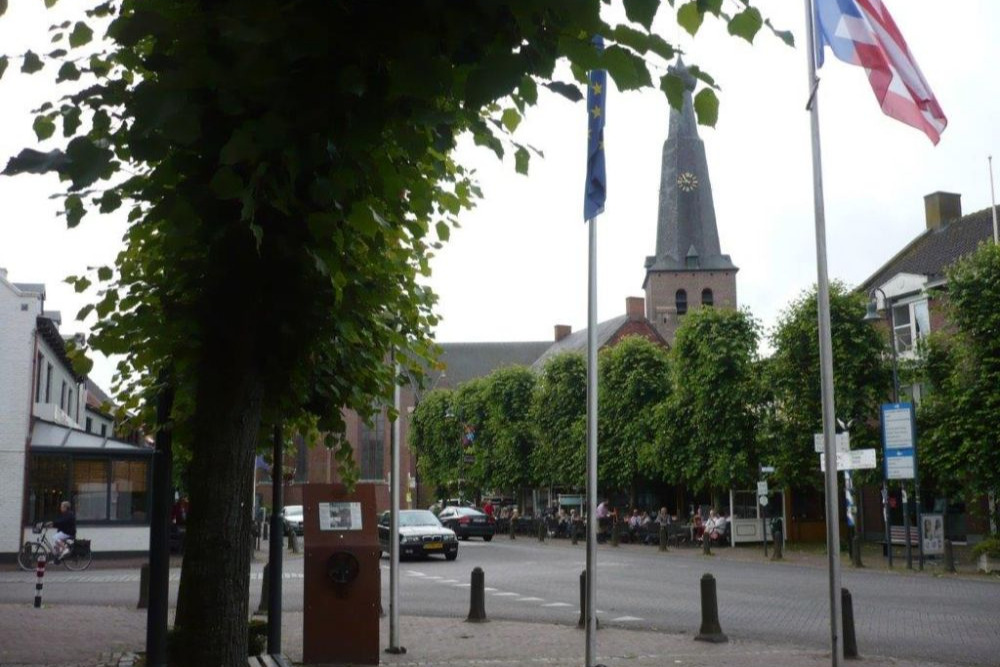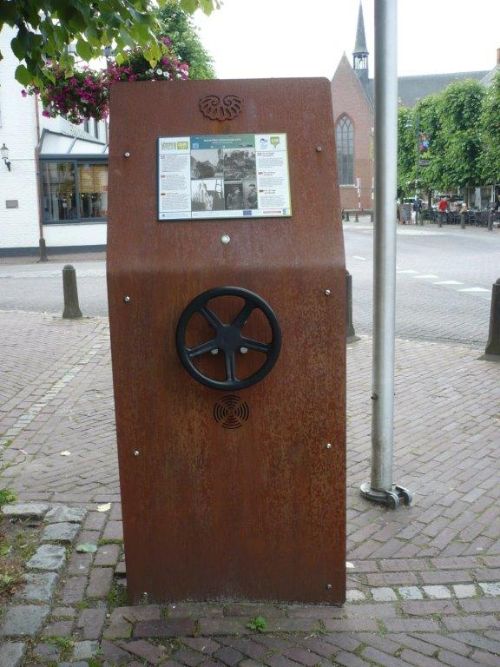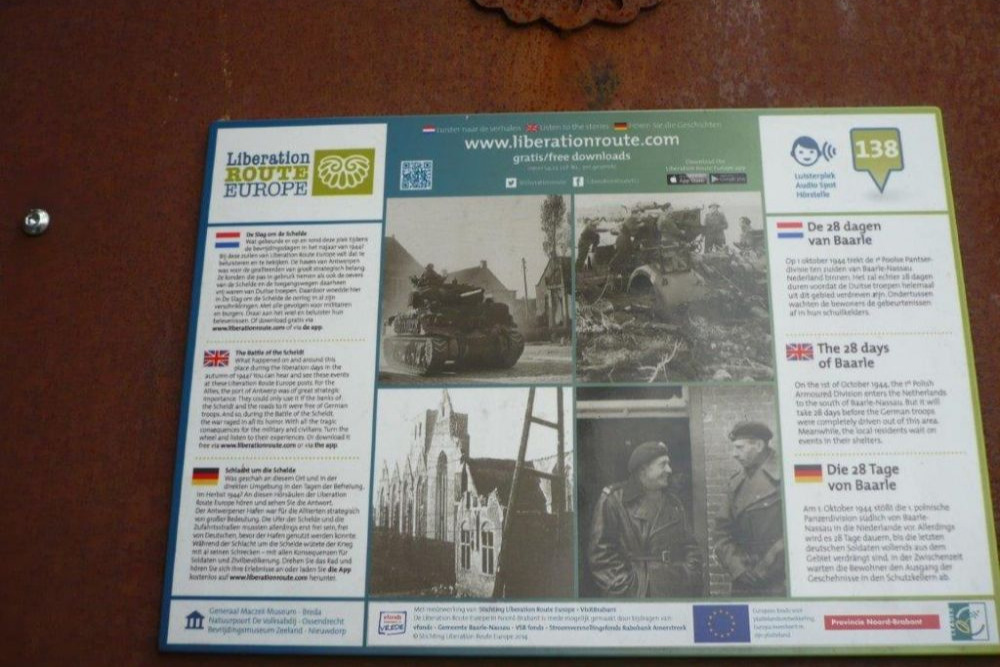Liberation Route Marker 138: The 28 days of Baarle
The 28 days of Baarle
On the 1st of October 1944, the 1st Polish Armoured Division enters the Netherlands to the south of Baarle-Nassau. But it will take 28 days before the German troops were completely driven out of this area. Meanwhile, the local residents wait on events in their shelters.
On Sunday the 1st of October 1944, led by General Maczek, the 1st Polish Armoured Division began military operations in West Brabant. They entered the Netherlands at the village of Zondereigen. The inhabitants of Baarle sought refuge in shelters. They would spend a lot of time in them, because Baarle was only liberated after 28 days.
The German army had reinforced its troops. Led by Hauptmann Mager, the 2nd Battalion of the 6th Fallschirmjäger Regiment participated in the fighting. Through a shrewd tactic, German paratroopers destroyed dozens of Polish tanks. General Maczek had to wait a long time for reinforcements. They had to be transported all the way from Normandy.
The residents of Baarle had to helplessly watch their village being turned into smoking rubble. The destruction of the impressive Belgian church, in particular, made a deep impression. On the 28th of October 1944, Baarle is finally liberated.
Audiospot - The 28 days of Baarle
Liberation Route Europe is a certified Cultural Route of the Council of Europe. With hundreds of sites and stories in nine European countries, the route links the main regions along the advance of the Allied Forces in 1943-1945.
The entire route consists of themed routes that can be travelled by by hiking, walking, cycling and car. These routes pass numerous historical and interesting sites and tell stories from a multitude of perspectives that were important in the final phase of World War II.
Many routes feature listening spots, offering the opportunity to listen to a historical story at a location. In addition, many ‘Vectors of Memory’ have been placed, indicating that the passer-by is on one of the Liberation Routes.
The routes can be found on the Liberation Route Europe website or in the app through which many stories can also be listened to.
Do you have more information about this location? Inform us!
Source
- Text: TracesOfWar & Liberation Route Europe
- Photos: Arie van Wijngaarden
Nearby
Point of interest
- Tank holes Baarle-Nassau - Baarle-Nassau
- V1-crater Baarle-Nassau - Baarle-Nassau
- Reconstruction Den Draad Zondereigen - Zondereigen (Baarle-Hertog)
Monument
- War Memorial Baarle-Hertog - Baarle-Hertog
- Memorial Executed Baarle-Hertog - Baarle-Hertog
- War Memorial Baarle-Nassau - Baarle-Nassau
Cemetery
- Commonwealth War Graves Roman Catholic Cemetery Baarle-Nassau - Baarle-Nassau
- Dutch War Graves Roman Catholic Cemetery Baarle-Nassau - Baarle-Nassau
- Belgian Graves Veterans Baarle-Hertog - Baarle-Hertog








